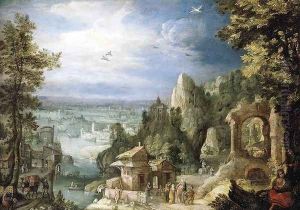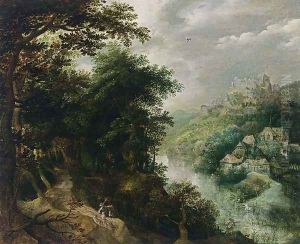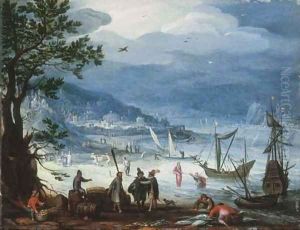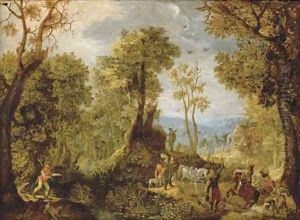Anthonie Mirou Paintings
Anthonie Mirou was a Flemish painter born in 1578 in Antwerp, a city that was then one of the leading cultural centers of the Low Countries. His life and career unfolded during the Dutch Golden Age, a period marked by unprecedented wealth, cultural achievements, and artistic innovation in the Netherlands. Mirou is known for his landscapes, which reflect the evolving tastes and interests of the time, moving away from religious and mythological themes to focus more on nature and the environment.
Mirou's artistic journey began in his hometown, where he was likely exposed to the vibrant artistic scene of Antwerp. Although specific details about his early training are scarce, it is believed that he was influenced by other Flemish painters of the era, who were renowned for their attention to detail, use of light, and expansive landscapes. Mirou's work often depicted natural scenes embellished with fantastical elements, showing a keen interest in capturing the beauty and mystery of the natural world.
Throughout his career, Mirou contributed to the development of landscape painting, a genre that was becoming increasingly popular among artists and collectors of the time. His paintings are characterized by their intricate detail, vibrant colors, and the harmonious blend of reality with imaginative elements. This blend not only appealed to the aesthetic tastes of his contemporaries but also inspired future generations of artists.
Despite his contributions to the art world, Anthonie Mirou's work was often overshadowed by that of his more famous contemporaries, such as Peter Paul Rubens and Anthony van Dyck. However, his landscapes continued to be appreciated for their beauty and craftsmanship, and they played a role in the evolution of the genre.
Anthonie Mirou's death in 1661 marked the end of a career that spanned much of the Dutch Golden Age. While he may not have achieved the same level of fame as some of his peers, his work remains a testament to the rich artistic tradition of the period. Today, Mirou's paintings can be found in various art museums and collections around the world, where they continue to be studied and admired for their unique blend of realism and fantasy.



